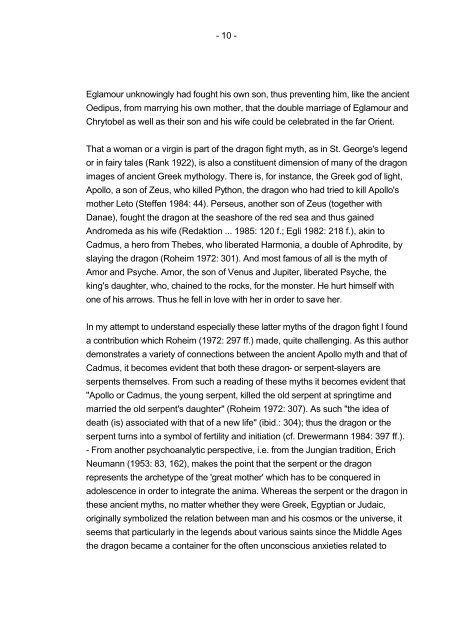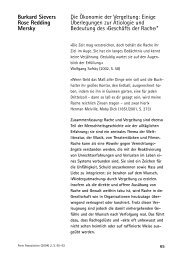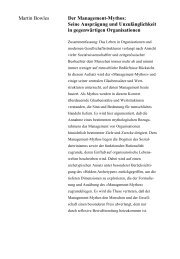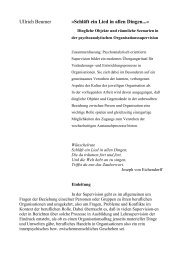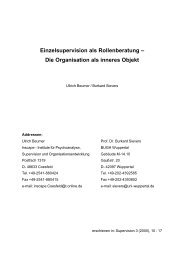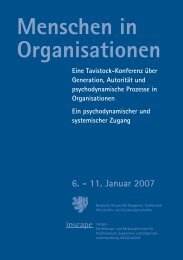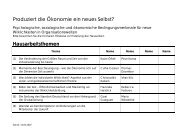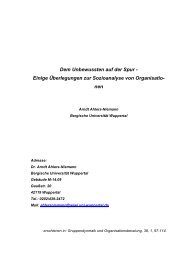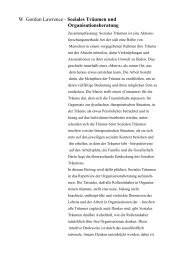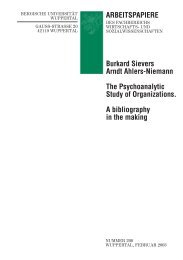Curing the monster Some images of and considerations - Prof. Dr ...
Curing the monster Some images of and considerations - Prof. Dr ...
Curing the monster Some images of and considerations - Prof. Dr ...
Create successful ePaper yourself
Turn your PDF publications into a flip-book with our unique Google optimized e-Paper software.
- 10 -<br />
Eglamour unknowingly had fought his own son, thus preventing him, like <strong>the</strong> ancient<br />
Oedipus, from marrying his own mo<strong>the</strong>r, that <strong>the</strong> double marriage <strong>of</strong> Eglamour <strong>and</strong><br />
Chrytobel as well as <strong>the</strong>ir son <strong>and</strong> his wife could be celebrated in <strong>the</strong> far Orient.<br />
That a woman or a virgin is part <strong>of</strong> <strong>the</strong> dragon fight myth, as in St. George's legend<br />
or in fairy tales (Rank 1922), is also a constituent dimension <strong>of</strong> many <strong>of</strong> <strong>the</strong> dragon<br />
<strong>images</strong> <strong>of</strong> ancient Greek mythology. There is, for instance, <strong>the</strong> Greek god <strong>of</strong> light,<br />
Apollo, a son <strong>of</strong> Zeus, who killed Python, <strong>the</strong> dragon who had tried to kill Apollo's<br />
mo<strong>the</strong>r Leto (Steffen 1984: 44). Perseus, ano<strong>the</strong>r son <strong>of</strong> Zeus (toge<strong>the</strong>r with<br />
Danae), fought <strong>the</strong> dragon at <strong>the</strong> seashore <strong>of</strong> <strong>the</strong> red sea <strong>and</strong> thus gained<br />
Andromeda as his wife (Redaktion ... 1985: 120 f.; Egli 1982: 218 f.), akin to<br />
Cadmus, a hero from Thebes, who liberated Harmonia, a double <strong>of</strong> Aphrodite, by<br />
slaying <strong>the</strong> dragon (Roheim 1972: 301). And most famous <strong>of</strong> all is <strong>the</strong> myth <strong>of</strong><br />
Amor <strong>and</strong> Psyche. Amor, <strong>the</strong> son <strong>of</strong> Venus <strong>and</strong> Jupiter, liberated Psyche, <strong>the</strong><br />
king's daughter, who, chained to <strong>the</strong> rocks, for <strong>the</strong> <strong>monster</strong>. He hurt himself with<br />
one <strong>of</strong> his arrows. Thus he fell in love with her in order to save her.<br />
In my attempt to underst<strong>and</strong> especially <strong>the</strong>se latter myths <strong>of</strong> <strong>the</strong> dragon fight I found<br />
a contribution which Roheim (1972: 297 ff.) made, quite challenging. As this author<br />
demonstrates a variety <strong>of</strong> connections between <strong>the</strong> ancient Apollo myth <strong>and</strong> that <strong>of</strong><br />
Cadmus, it becomes evident that both <strong>the</strong>se dragon- or serpent-slayers are<br />
serpents <strong>the</strong>mselves. From such a reading <strong>of</strong> <strong>the</strong>se myths it becomes evident that<br />
"Apollo or Cadmus, <strong>the</strong> young serpent, killed <strong>the</strong> old serpent at springtime <strong>and</strong><br />
married <strong>the</strong> old serpent's daughter" (Roheim 1972: 307). As such "<strong>the</strong> idea <strong>of</strong><br />
death (is) associated with that <strong>of</strong> a new life" (ibid.: 304); thus <strong>the</strong> dragon or <strong>the</strong><br />
serpent turns into a symbol <strong>of</strong> fertility <strong>and</strong> initiation (cf. <strong>Dr</strong>ewermann 1984: 397 ff.).<br />
- From ano<strong>the</strong>r psychoanalytic perspective, i.e. from <strong>the</strong> Jungian tradition, Erich<br />
Neumann (1953: 83, 162), makes <strong>the</strong> point that <strong>the</strong> serpent or <strong>the</strong> dragon<br />
represents <strong>the</strong> archetype <strong>of</strong> <strong>the</strong> 'great mo<strong>the</strong>r' which has to be conquered in<br />
adolescence in order to integrate <strong>the</strong> anima. Whereas <strong>the</strong> serpent or <strong>the</strong> dragon in<br />
<strong>the</strong>se ancient myths, no matter whe<strong>the</strong>r <strong>the</strong>y were Greek, Egyptian or Judaic,<br />
originally symbolized <strong>the</strong> relation between man <strong>and</strong> his cosmos or <strong>the</strong> universe, it<br />
seems that particularly in <strong>the</strong> legends about various saints since <strong>the</strong> Middle Ages<br />
<strong>the</strong> dragon became a container for <strong>the</strong> <strong>of</strong>ten unconscious anxieties related to


